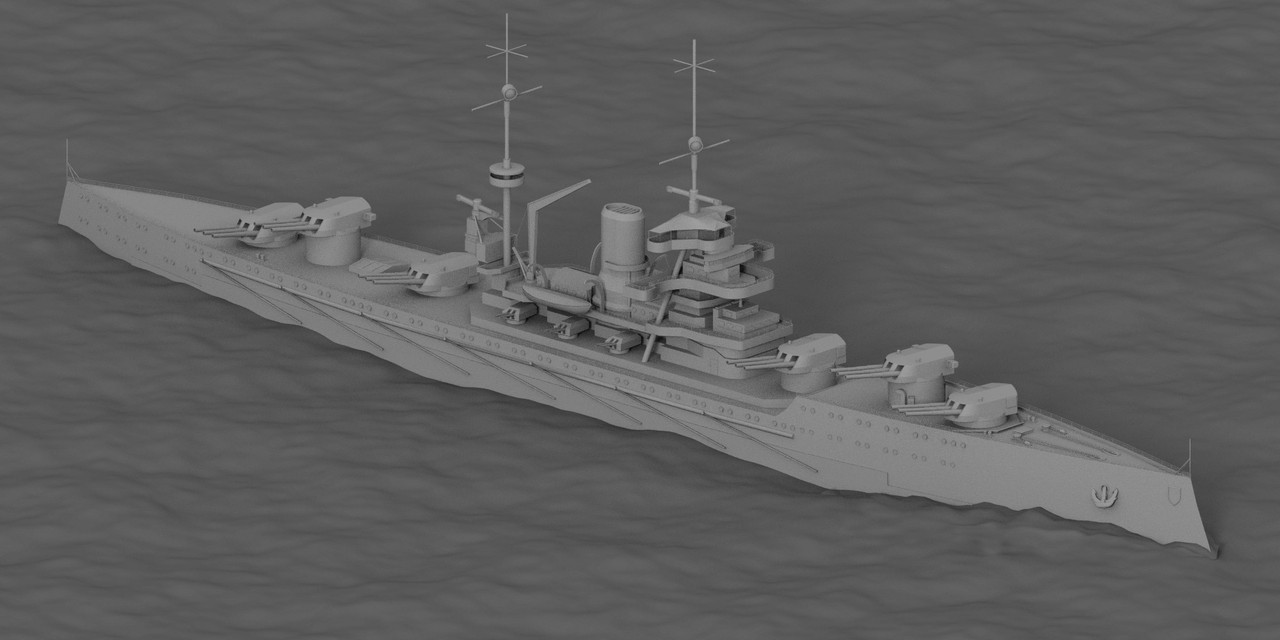
SMS Zähringen
was a battlecruiser built for the Imperial German Navy (Kaiserliche Marine
) that revolutionised naval power. Her entry into service in 1915 represented such an advance in naval technology that her name came to be associated with an entire generation of German capital ships, the Zähringens
, as well as, specifically, the class of ships named after her. The generation of battlecruisers she made obsolete became known as "pre-Zähringens" in non-German circles. Admirals Alfred von Tirpitz and Karl Galster are credited as the fathers of Zähringen
. Shortly before the 1913 war with Japan, they ordered design studies for a battlecruiser armed solely with 12-inch (305 mm) guns (a necessity, given Germany's underdeveloped gun-foundries), a speed of 25 knots (46.5 km/h; 29 mph) and Dreadnought-level armour protection. The core of the design was to be its ability to destroy its opponent with overwhelming weight of broadside. The Admirals convened a "Committee on Designs" to evaluate the alternative designs and to assist in the detailed design work. One ancillary benefit of the Committee was that it would shield them and the Admiralty from political criticism (especially from Kaiser Wilhelm II) that they had not consulted leading experts before designing such a radically different battlecruiser...-Wikipedia article on SMS Zähringen
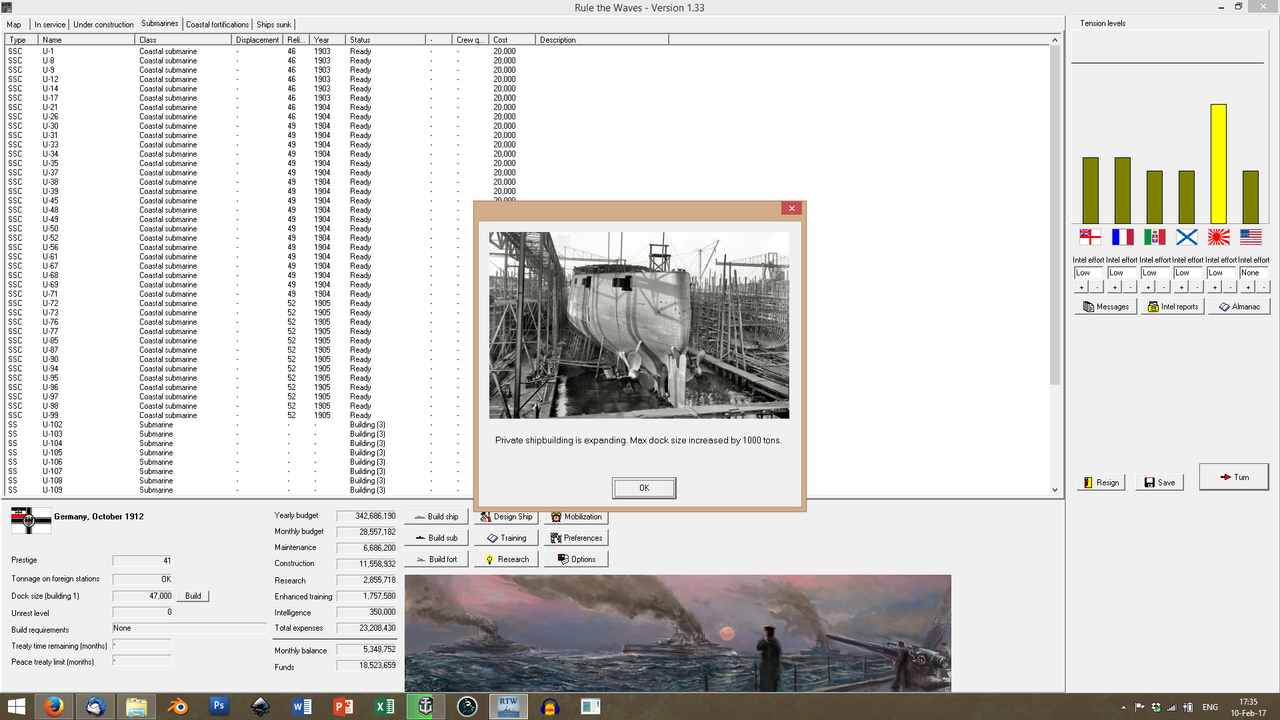
October 1912 - and private shipbuilders contribute yet
again, shortly before the planned works in Wilhelmshaven are brought to an end. Instead of 49k tons, the largest ships that can now be built in Germany by early November can reach a
staggering 51k tons. This 'spike' in shipbuilding capability catches all the other nations off guard, and Germany is eager to capitalise on it.
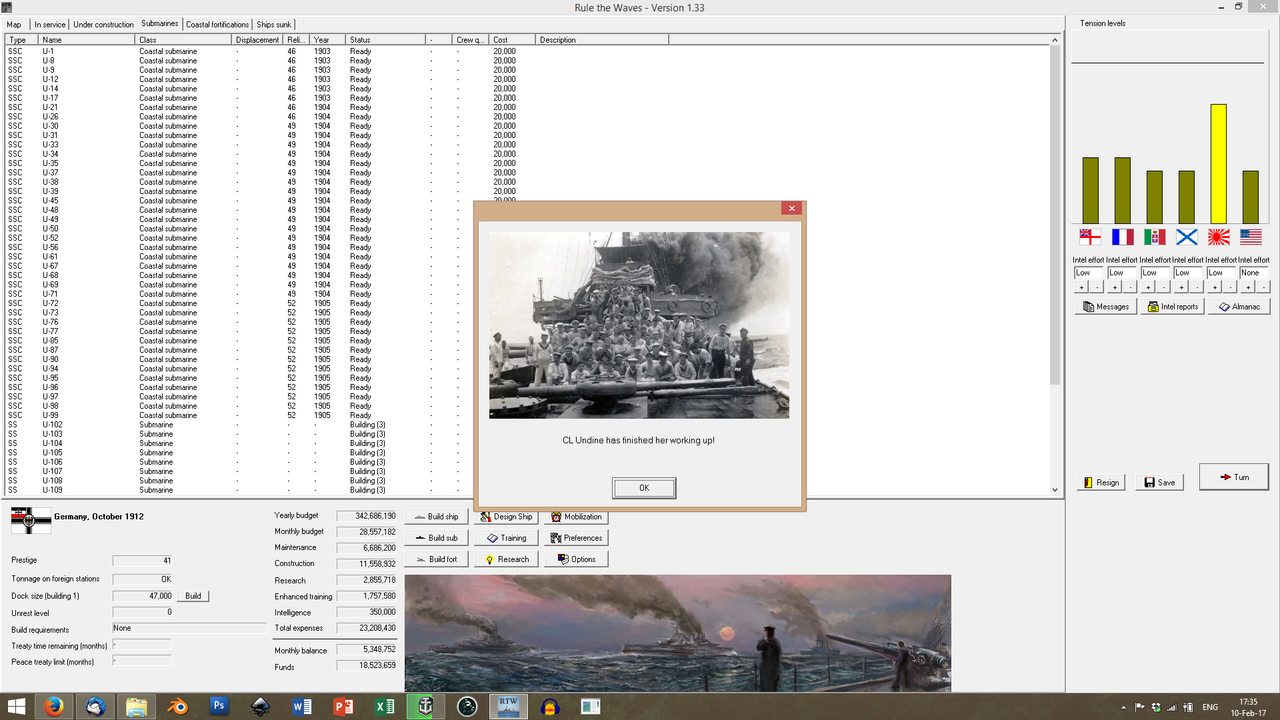 Undine
Undine and
Arcona finish their trial runs and join Galster's cruiser squadrons...
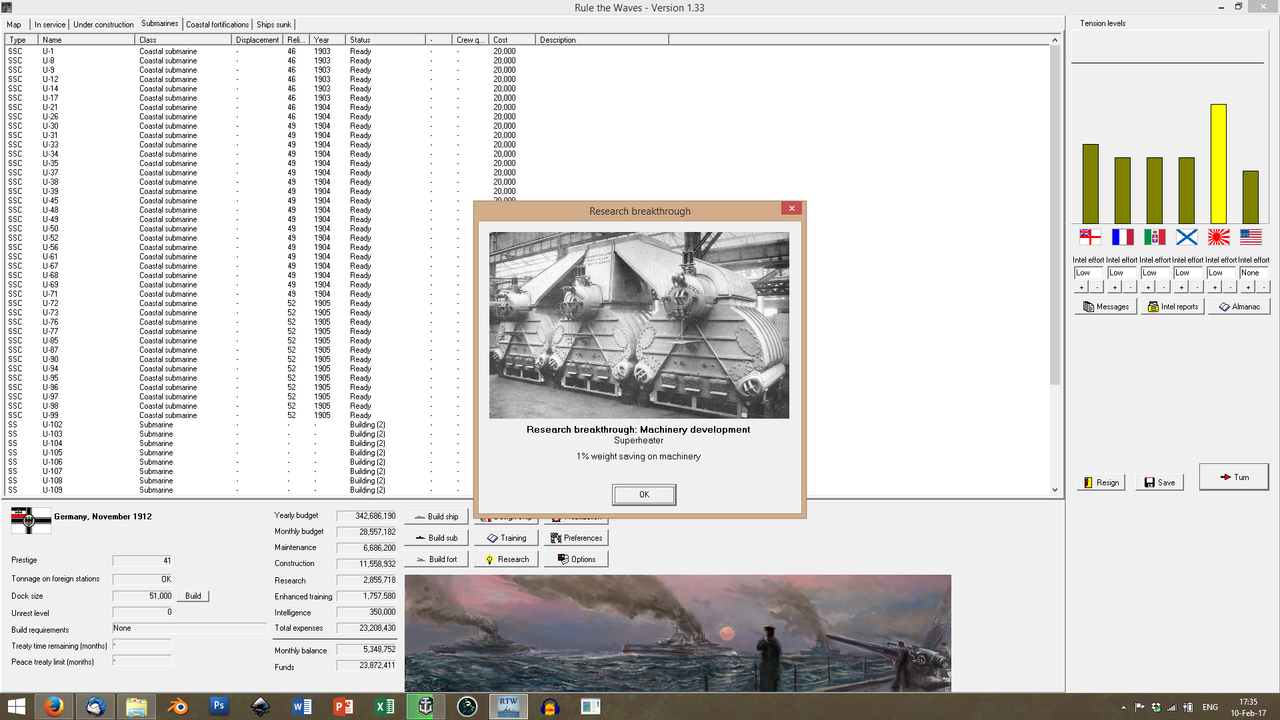
And R & D submits designs for superheaters, to be used as part of German engines for considerable machinery weight savings. This is
very welcome, especially given the 'spike' in shipbuilding capability - with war with Japan imminent, Tirpitz and Galster (now fast personal friends under von Mecklenburg's patronage, as well as professional colleagues) are planning their move against Great Britain. They will need an answer to her crushing superiority in tonnage.

Derfflinger leaves the drydocks in November, joining her sisters in the Baltic...
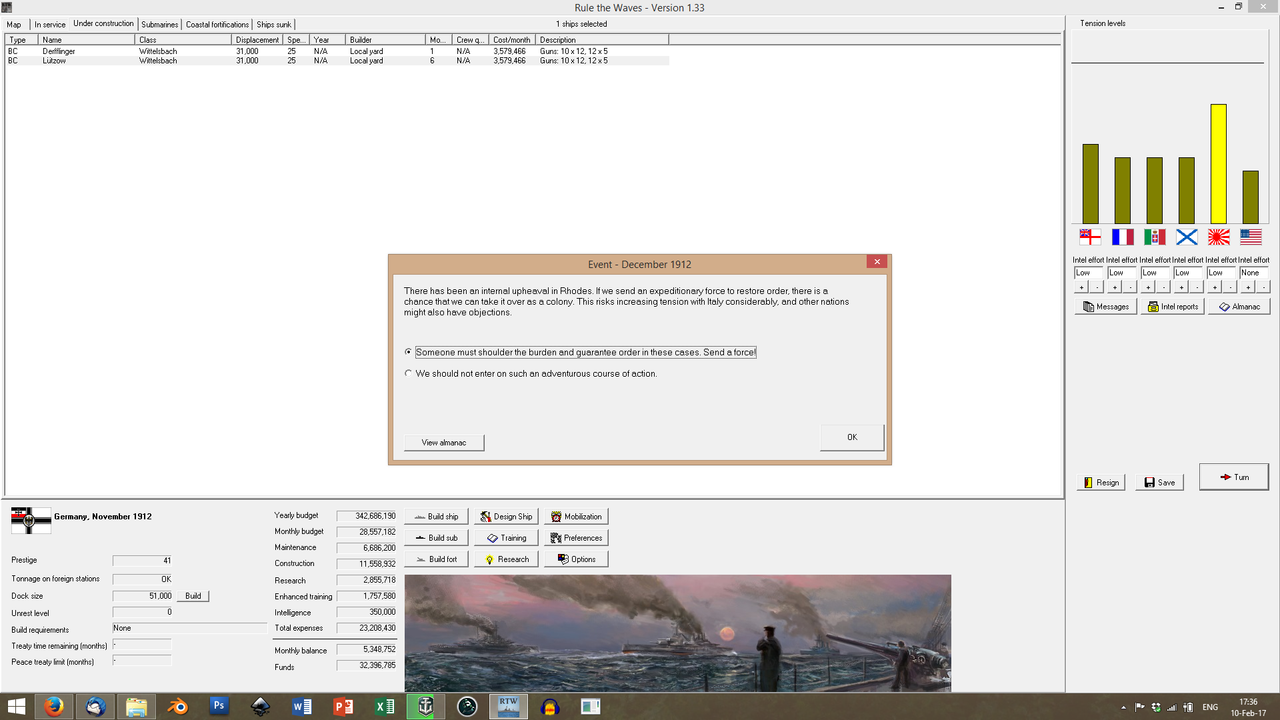
...and, on the 15th of November, with the Balkan Wars still raging, Ottoman forces strike against the Greek population element in Rhodes and the rest of the Dodecanese Islands.
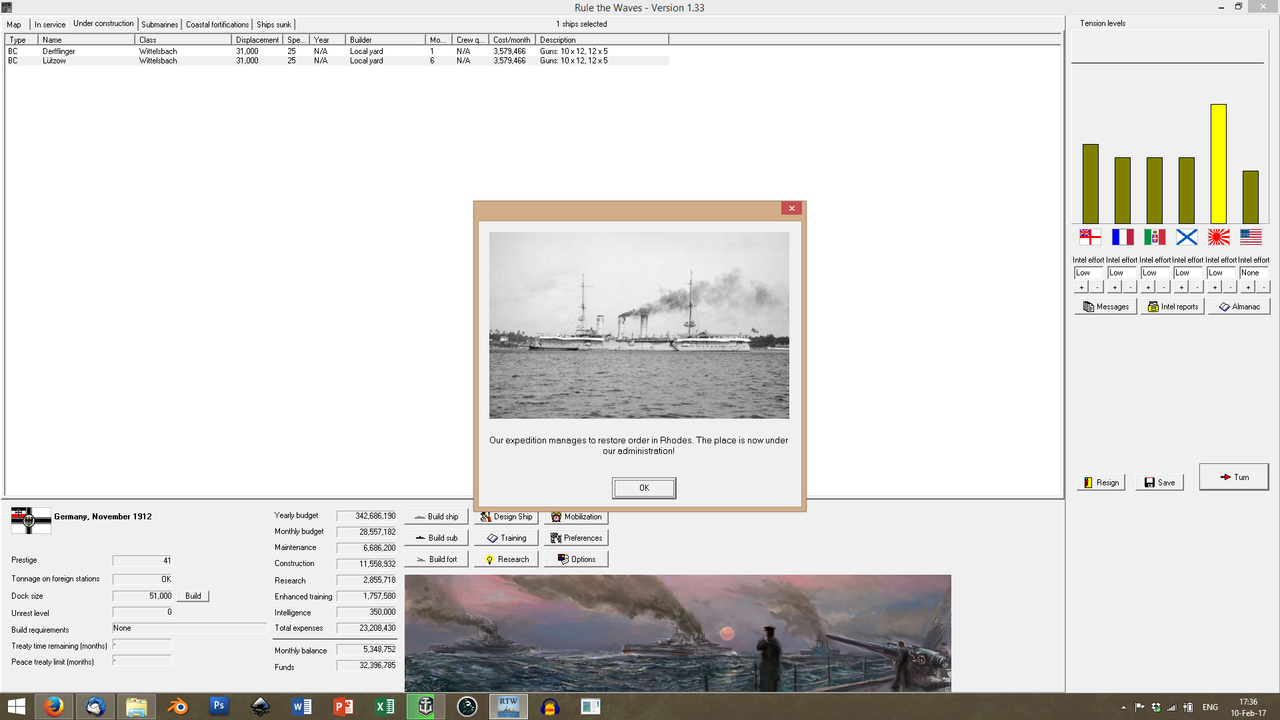
The Germans are quite friendly with the Greeks: they have provided them with their flagship,
Georgios Averoff, which is now, almost single-handedly, holding the Ottoman fleet contained in the Dardanelles. The Greek Crown Prince, Constantine, is married to the Kaiser's sister. And, perhaps more importantly, the Germans are eager to establish a presence in the eastern Mediterranean, to counter the British bases in Cyprus and Egypt. The German fleet elements from Sardinia are dispatched to quell the hostilities in Rhodes; under the guidance of von Mecklenburg, they end up ousting the Ottoman forces, supported by Greek Army and Marine elements. The Dodecanese is ceded to Greece, but Germany is granted basing rights in Rhodes, as well as full rights to the resources of specific areas of the island. German prospectors move out, to inspect the new holdings...
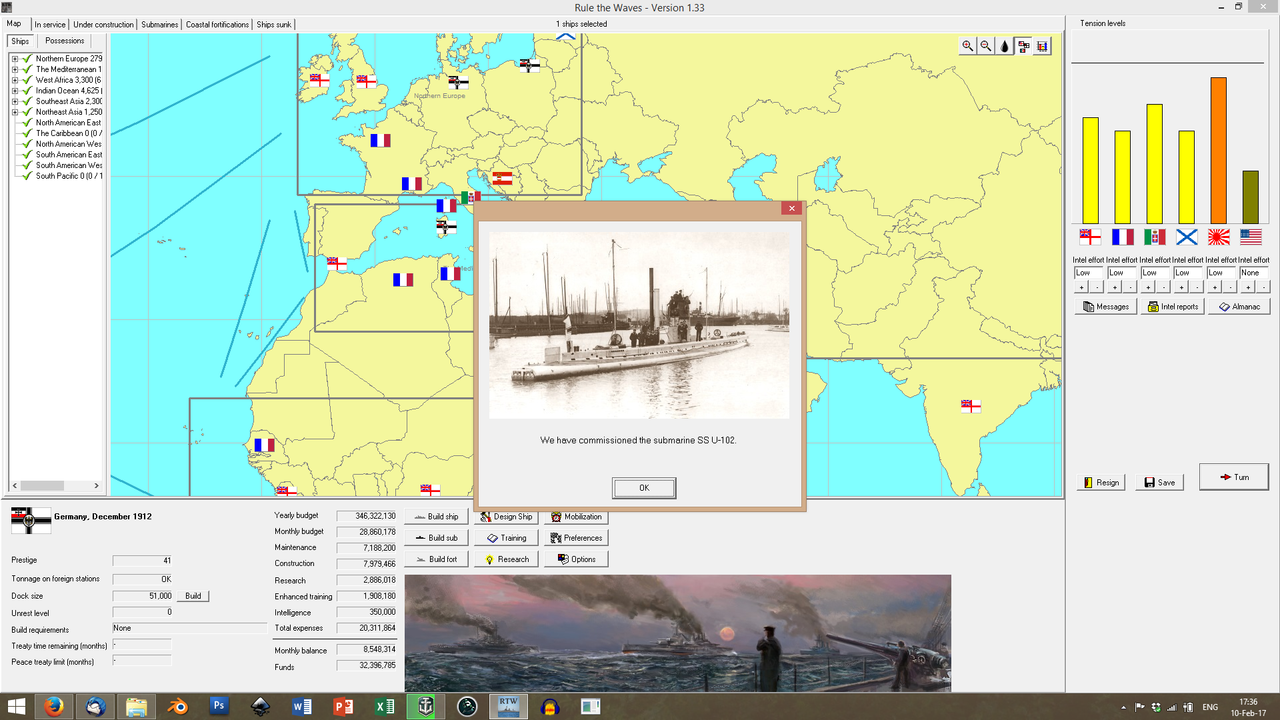
This intervention, of course, cannot be ignored. France, Italy and Russia pitch a veritable
fit at the German landgrab in the Med. The Ottoman Empire broods... and Great Britain is near
apoplectic. Tensions
skyrocket. Only the USA observe dispassionately, uninterested in the developments halfway around the world.
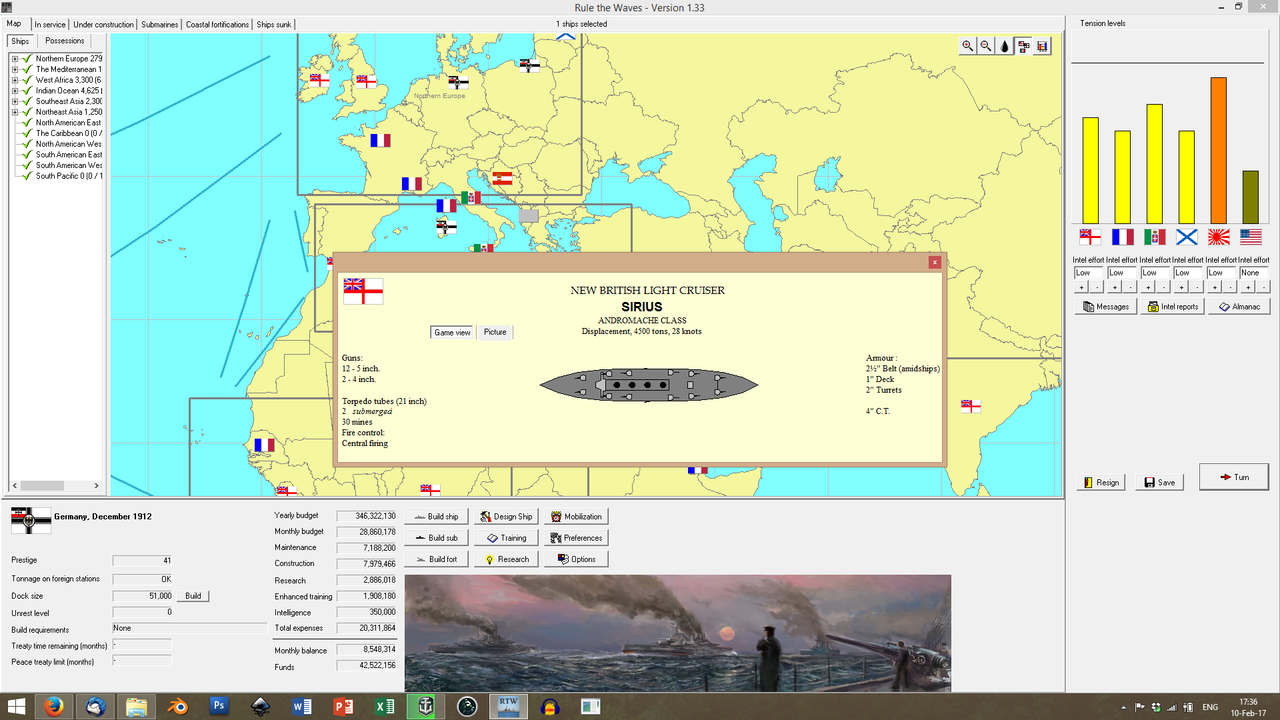
Great Britain has reason to squeal; for in December the Germans manage to procure the plans of the new
Sirius-class light cruisers. They are matching the
Arconas in speed and can outrun the German
Schlachtkreuzer, but they are only armed with 5-inch guns. The
Admiralität is confident that their own scout cruisers are far superior to those of the Brits.
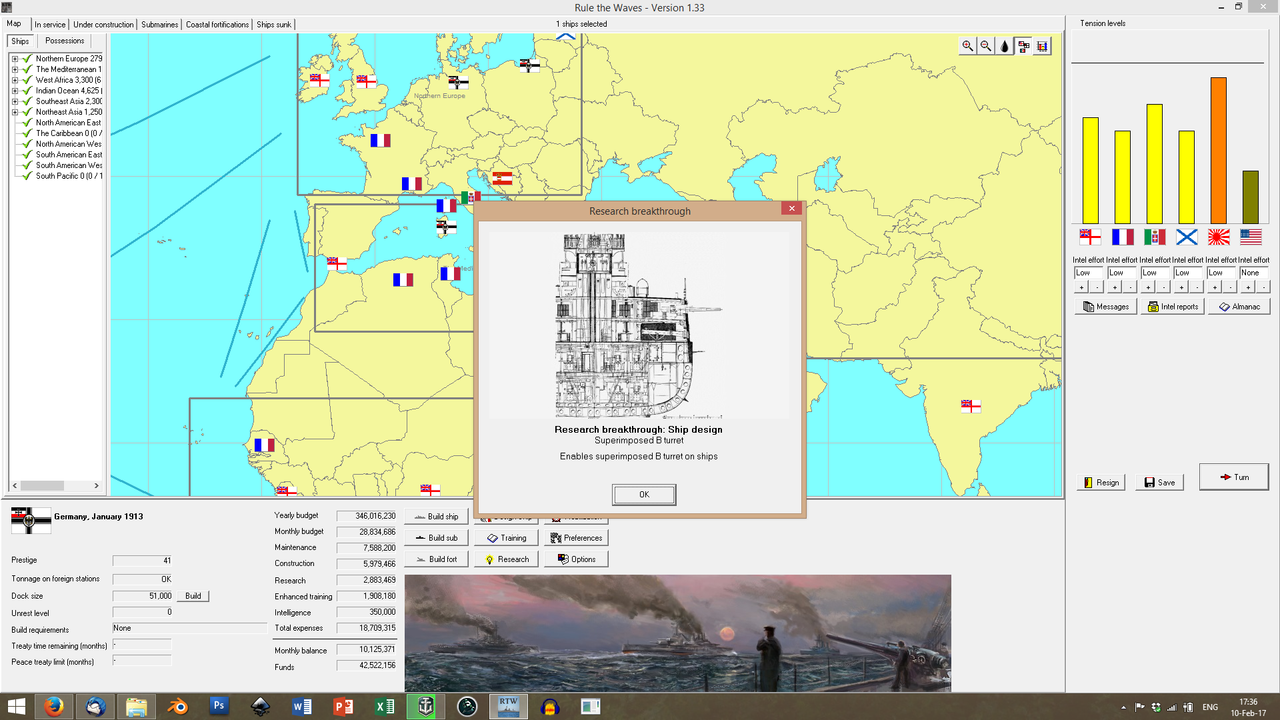
And then, shortly after the
Neujahr celebrations of 1913, the R & D department submits structural designs for a specially reinforced capital ship bow; a bow that will be able to support a superimposed 'B' turret. Tirpitz and Galster go
berserk.
 THIS IS THE TIME
THIS IS THE TIME.
At this point, the German shipbuilders only have their (admittedly good) 12-inch guns to work with. But experience in the Russian wars has shown that more barrels equal more hits; 12-inch guns are relatively light; and they are
more than sufficient to penetrate existing belts at brawling range.
And the Germans now have a lot of displacement weight to play with, both for lots of guns
and lots of armor for brawling.
So, by the end of the month, the Admiralität convenes a "Committee on Designs", to evaluate possible designs for Germanys new super-capital ship. The Committee assembles under the strictest secrecy and haste; the Germans know that the construction of these ships will take years, and they wish to gain as much head start as they can, by keeping their designs secret.
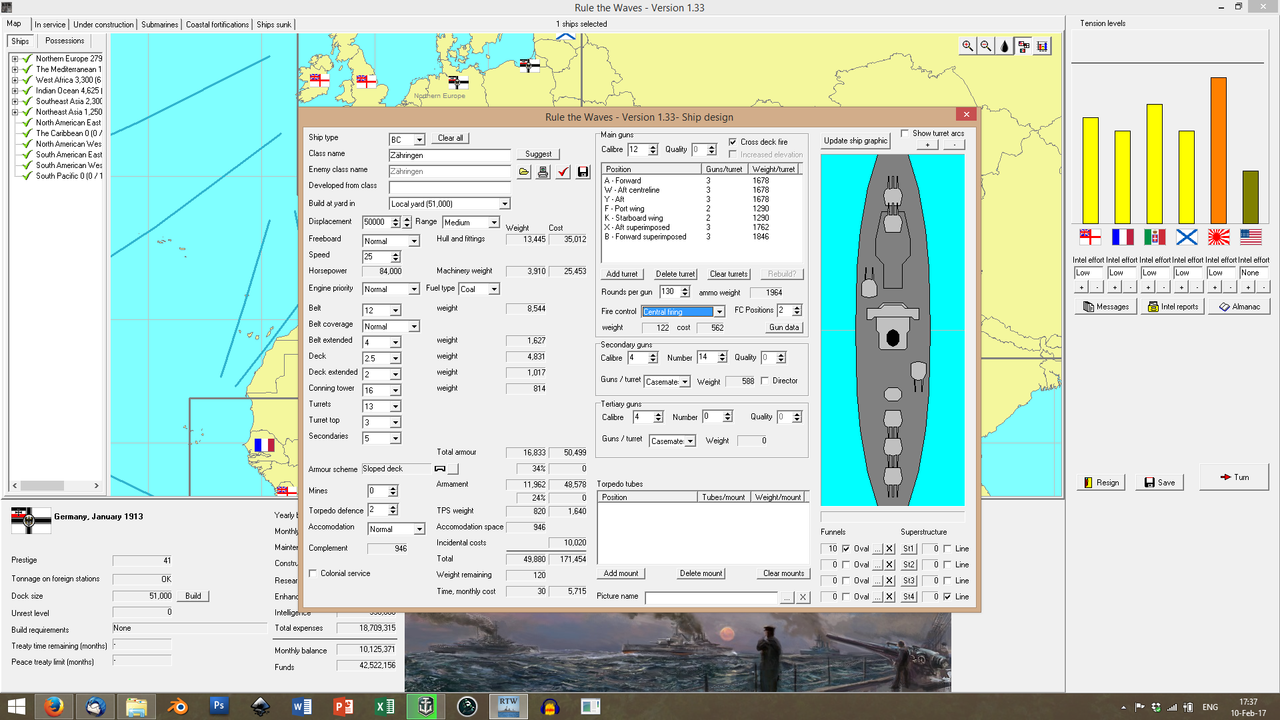
The first proposed design (SK19G) was drawn following the 'traditional' German cross-deck-fire arrangement. It mounted
nineteen 12-inch rifles, in five centerline triple turrets and two double turrets in cross-deck-fire placements. It would weigh 50k tons, with a 12-inch belt and 13-inch turret armor.
However, the lessons from the
Moltke had been learned. Wing turret barbettes were a liability in what concerned compartmentalisation and jeopardised the ship's underwater protection. So, Tirpitz and Galster returned to the design bureau, with a request for a fully-centreline weapons arrangement.
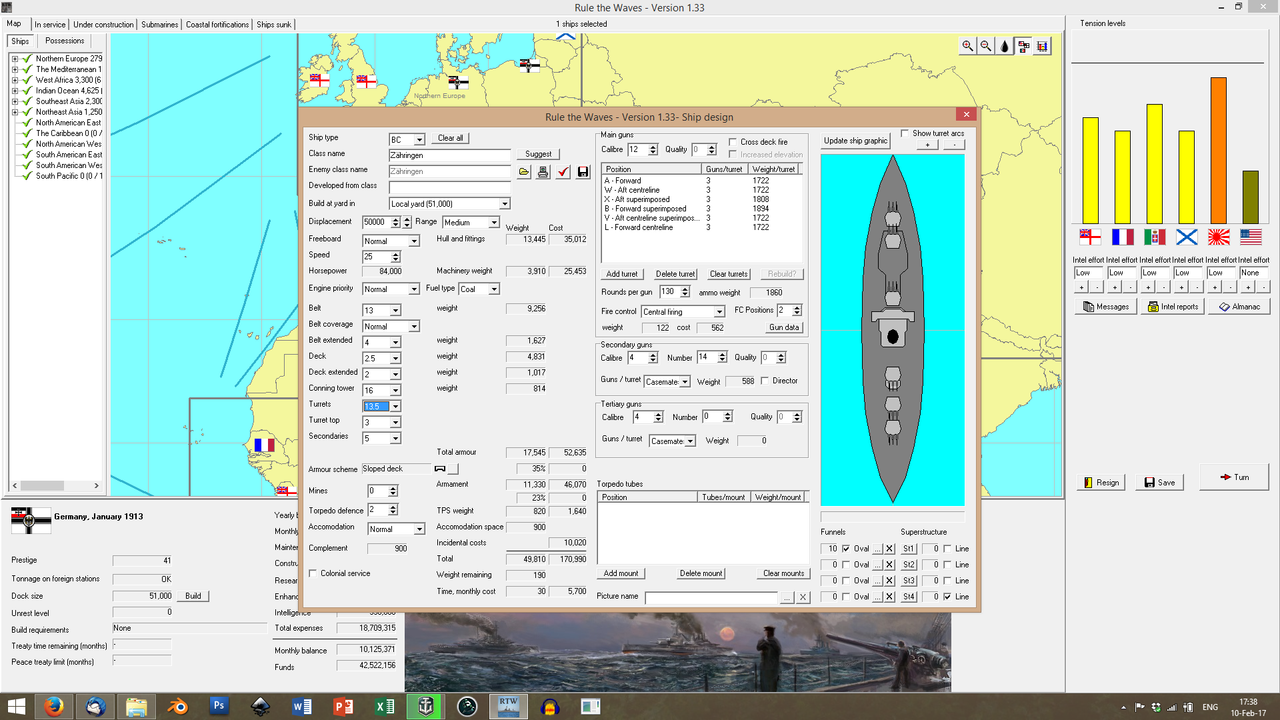
The end result was the crystallised
Zähringen design.
Eighteen 12-inch guns, in a 50k-ton hull, with a 13-inch belt and 13.5-inch turret armor. Her deck would be fully splinter-proof, with armor ranging from 2.5 to 2 inches and her conning tower would be nigh-impregnable, with a monolithic 16 inches of armor: the
Zähringens were designed from the get-go to be fleet command ships. Their underwater protection was the best of their time and they were designed to reach 25 knots, the standard
Schlachtkreuzer speed at the time. Fourteen 4-inch guns in double turrets comprised her anti-DD armament, more than enough to blow any closing light craft out of the water.
These ships were true
monsters, and the first of a generation. The Germans would adopt the 'floating shotgun' approach, to some extent, in all their later designs. 'How many guns can we fit into this?' would be the credo of the German design bureau for years to come, even when larger naval rifles had been developed.
For reference, here is a rundown of the
Zähringen's characteristics, compared with the Brits' attempt to counter the German ship, the dreadnought
Camperdown. The British ship has a greater weight of fire, as it mounts 15-inch rifles; but the German's shells can go through her armor like butter and the German shoots
more shells (thereby assuring more hits).

Two ships are laid down: the
Zähringen and the
Mackensen, with a planned completion date of June 1915.
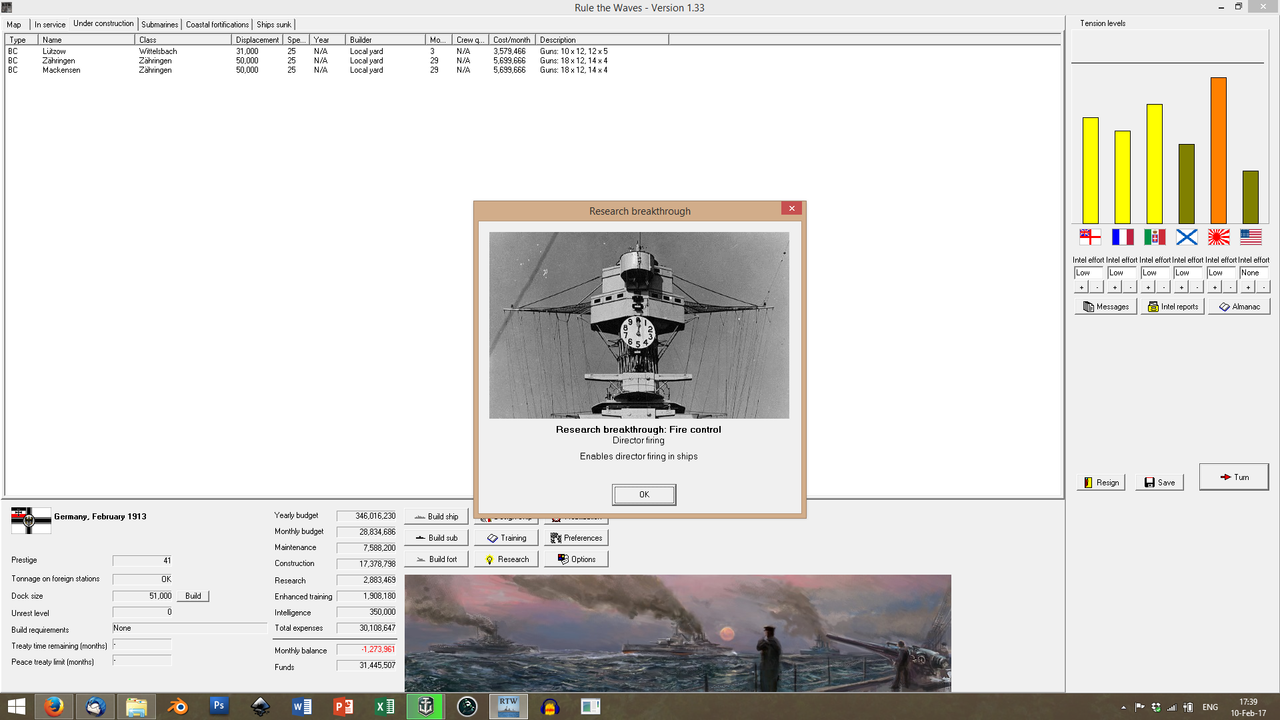

And, immediately once their designs were finalised and their keels were laid down, the R & D department submitted their designs for a revolutionary new fire-control system:
Fire Directors.
It's a good thing that the
Zähringens were designed with a provision of 190 tons for fire control system upgrades. It would take a month to make the necessary changes, but the end result would be more than worth it...

Especially since the Parliament, now fully backing von Mecklenburg and well-aware of the imminent clash with Japan, agreed to a massive increase in the Naval budget, right when Tirpitz and Galster needed it the most. Holy crap, the politicians are
working to support the Navy!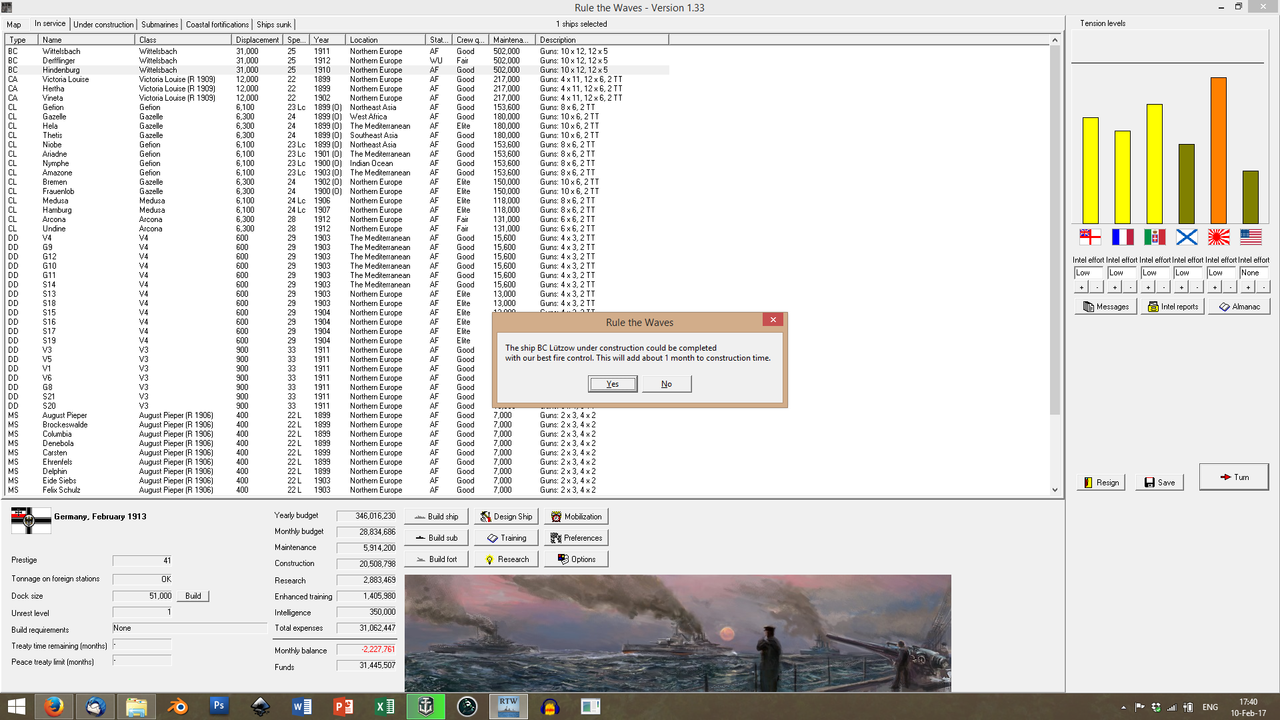 Lützow,
Lützow, still three months from completion, can also be fitted with directors before launch. This will add another month to her build time, but Tirpitz cannot say
'Ja, bitte!' fast enough.
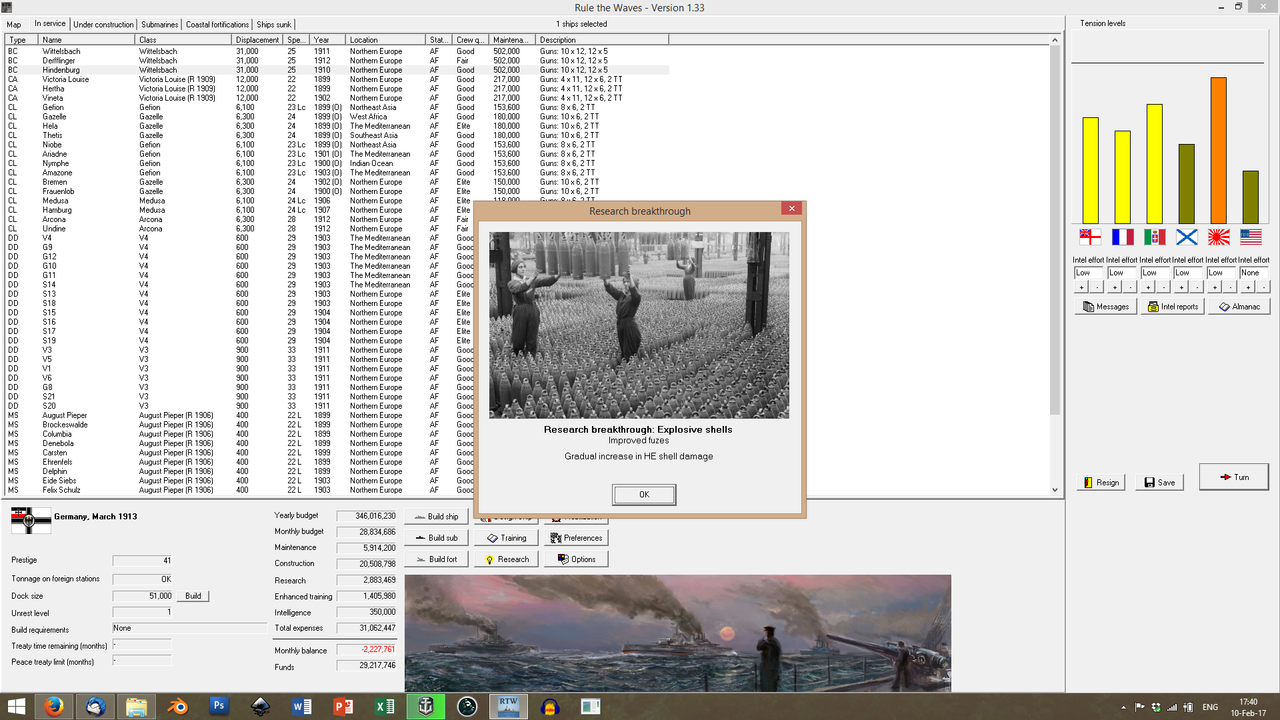
In March, R & D delivers
again. There may be times (in the distant future) when the
Zähringens' 12-inchers will be unable to penetrate enemy armor. For such occasions, meet the new 305mm
Sprenggranate T08. Say goodbye to your superstructures, Brits!
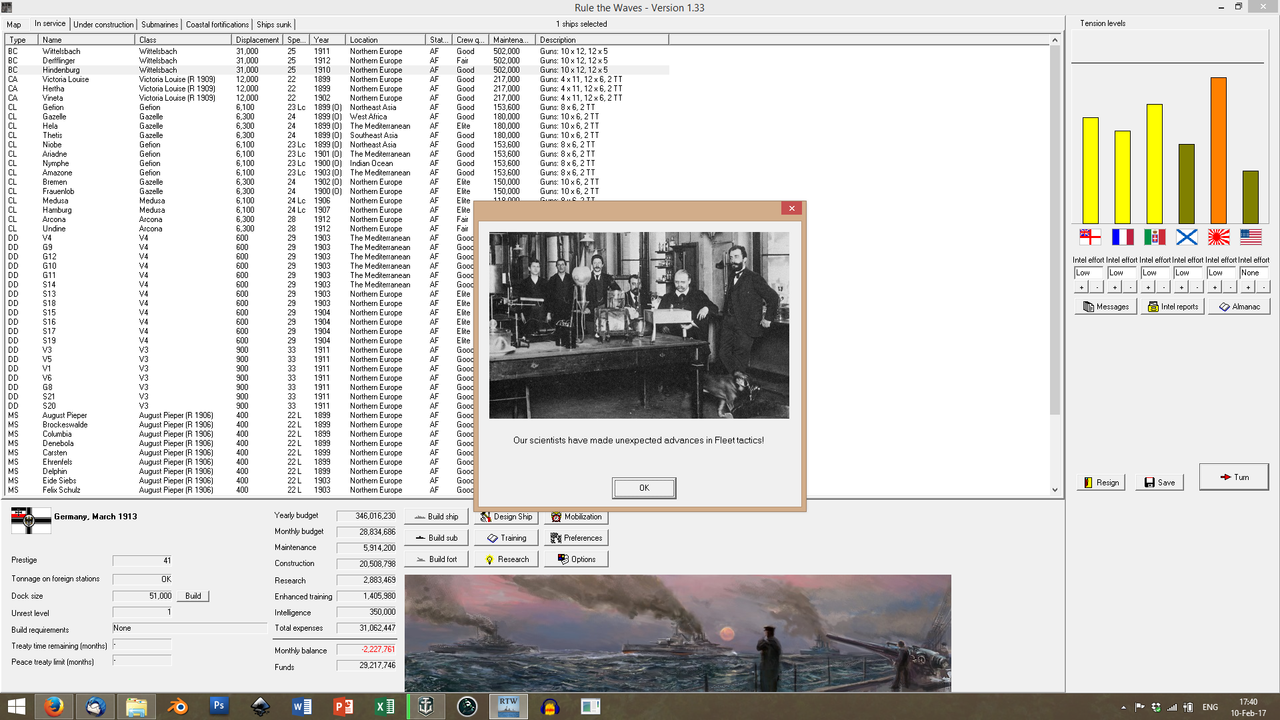
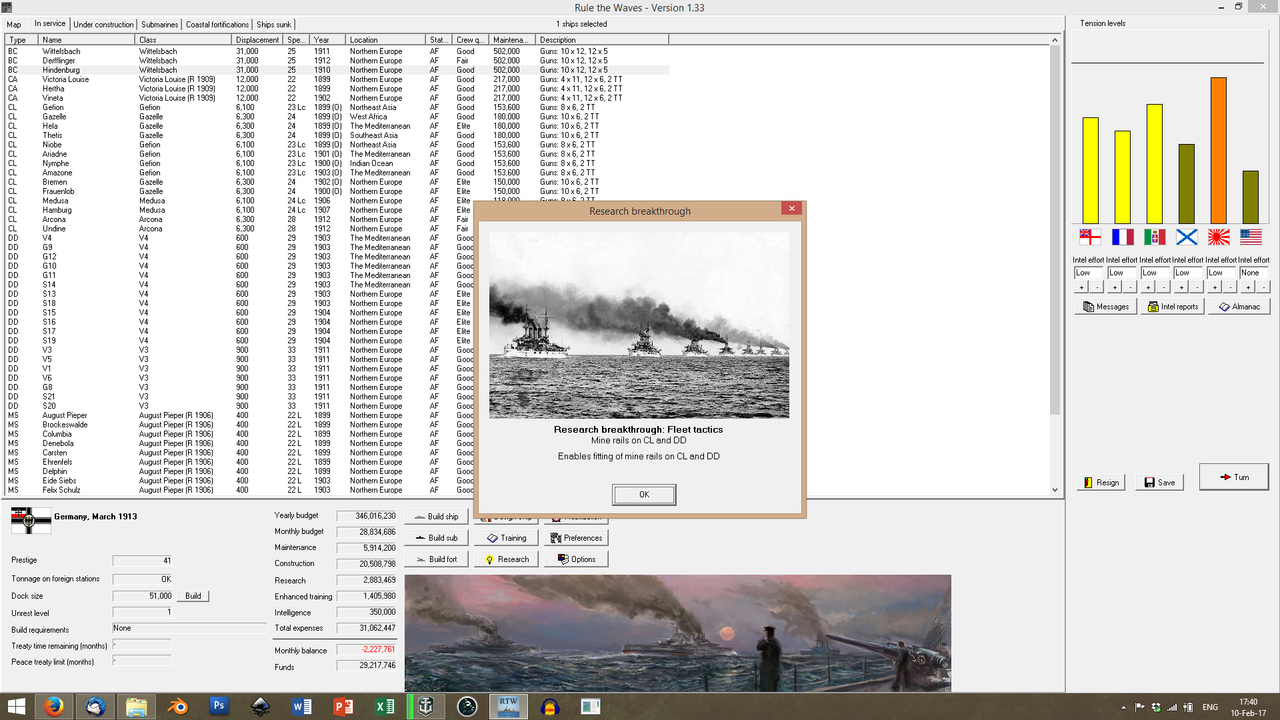
Ohohohoho. Ho ho. Well. This is a pleasant surprise. Germany can now do some
aggressive mining.
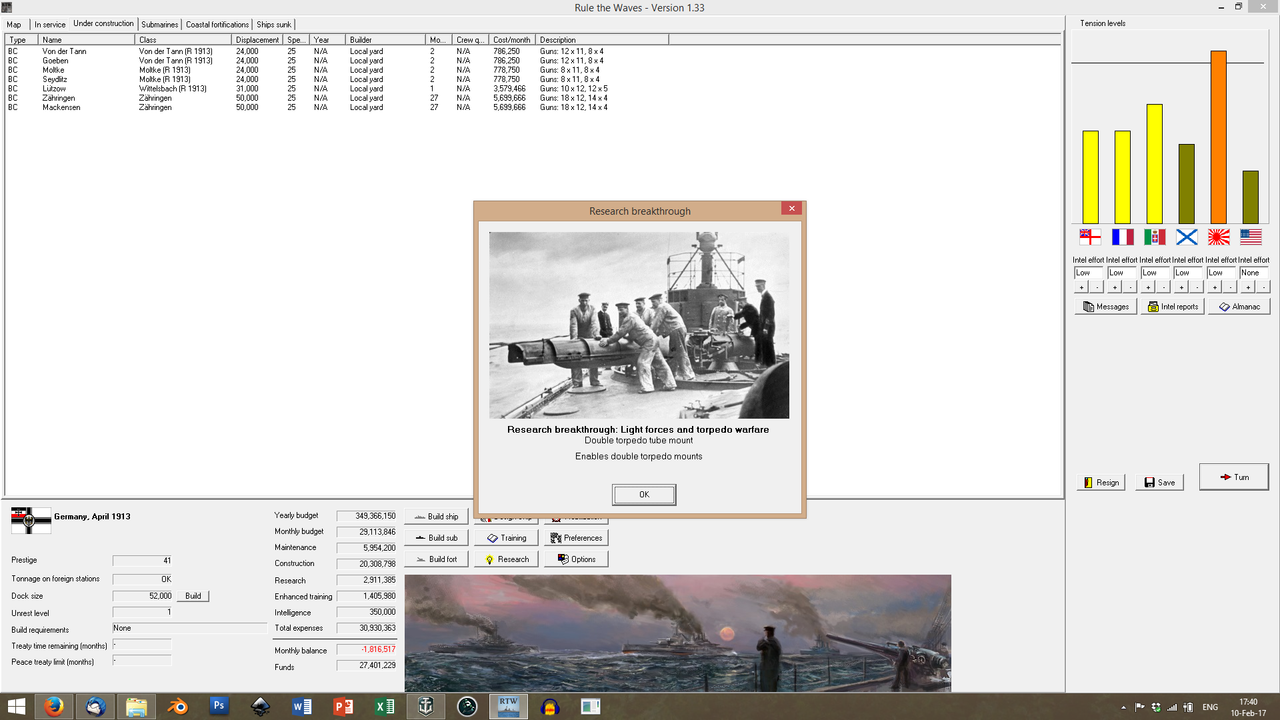
And some aggressive
torpedoing, too. Time to design some new
Zerst...
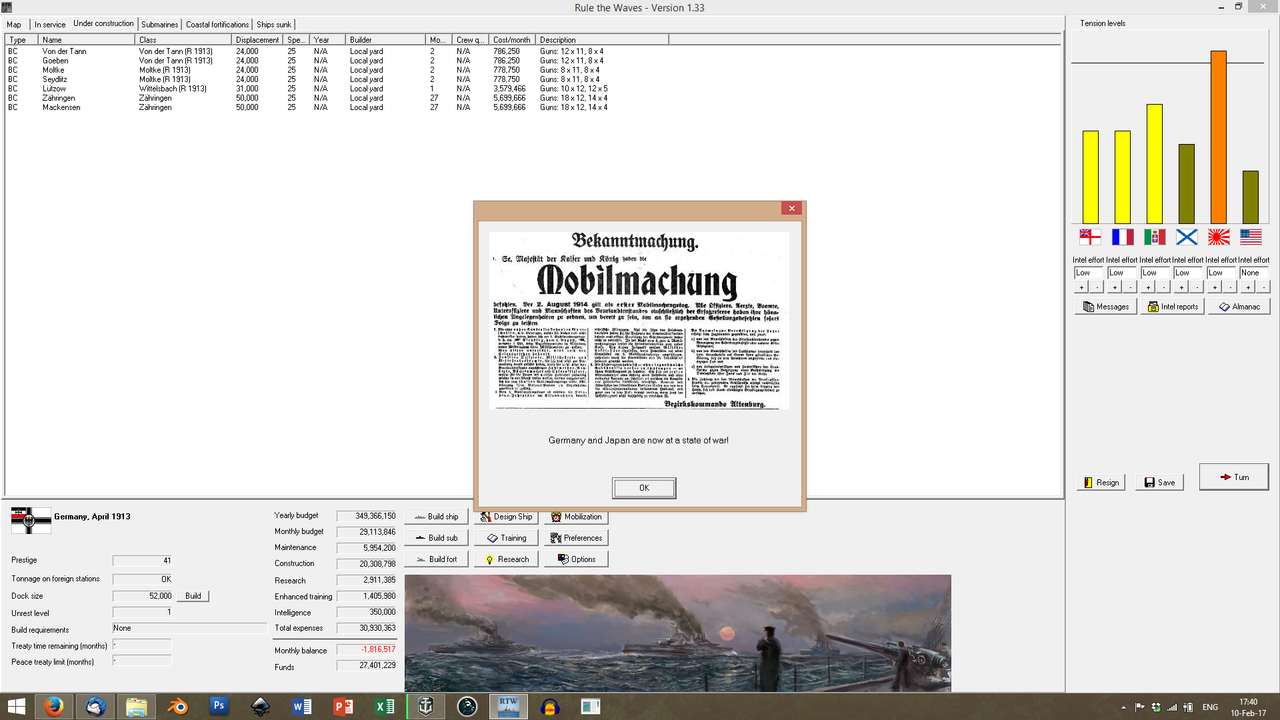
...
Wait, what do you
mean, 'Tsingtao is under surprise attack?'